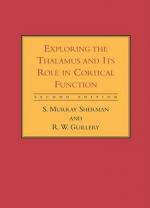|
This section contains 295 words (approx. 1 page at 300 words per page) |
The metathalamus, which is also known as the corpora geniculata, is located in a region of the forebrain called the diencephalon. It is comprised of two structures, the medial geniculate body and the lateral geniculate body.
In cross-section the brain appears similar to a cauliflower. In this visual example the metathalamus would be located near the stem of a cauliflower cut lengthwise in half.
The diencephalon region of the forebrain is divided into three smaller regions. One of these is called the thalamencephalon. This is the area of the metathalamus, thalamus, and the epithalamus. These areas of the brain function in the receipt and processing of sensory information.
The metathalamus is involved with the processing of information received from the eyes and from the ears. Specifically, the lateral geniculate body contains the processing machinery for vision-related information, and the lateral geniculate body contains the machinery for hearing-related information. Nerves from the ears merge with the optic nerve that extends from the back of the eye. The optic nerve enters the brain and branches into the medial and lateral geniculate bodies of the metathalamus.
The medial geniculate body also goes by the names corpus geniculatum mediale, internal geniculate body, and postgeniculatum. It is located very near the thalamus. It is oval-shaped and fibers emerging from one part of the body pass to the optical tract.
The lateral geniculate body is also called the corpus geniculatum laterale, external geniculate body, or the pregeniculatum. It is also oval in shape but is darker in color and larger than the medial body. The gray and white matter (components of neuron cells) that make up the body alternate, giving a striped appearance. Many nerve fibers from the optic tract (specifically from the ears) merge with the lateral body.
|
This section contains 295 words (approx. 1 page at 300 words per page) |


